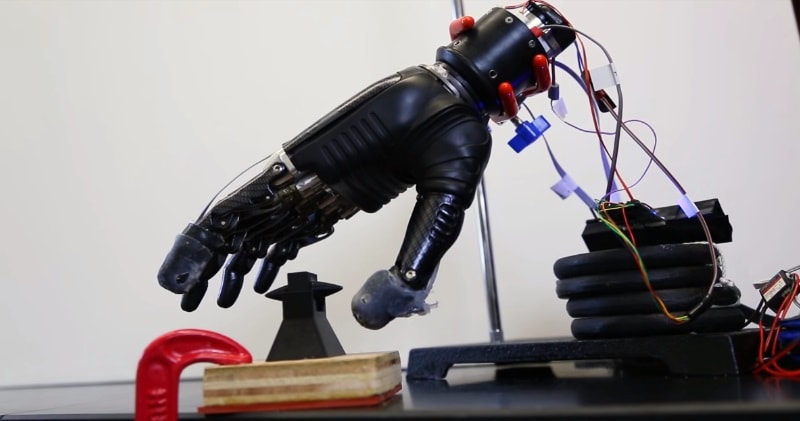In a laboratory at Johns Hopkins, biomedical engineer Luke Osborn is giving a sense of touch and pain back to amputees. His solution, an electronic “skin” called an e-dermis, provides vital sensory information that could protect the prosthetic–and the wearer.
source/image: Johns Hopkins University
The electronic skin is made of a soft material and rubber seeded with the touch sensors that can actually reproduce the activity of nerve endings. It can be wrapped around the fingertips of existing prostheses.
Sensations are relayed through the skin via non-invasive transcutaneous electrical nerve stimulation, providing a range of feelings from a fine touch to “uncomfortable yet tolerable” pain.
Advertisement
Any form of touch-induced to the e-dermis is transmitted to the brain of the user through an electric nerve stimulator embedded on the prosthetic arm by allowing the prosthetic to detect a level of pain, and provides a more natural feelings while also protecting itself from damage.











